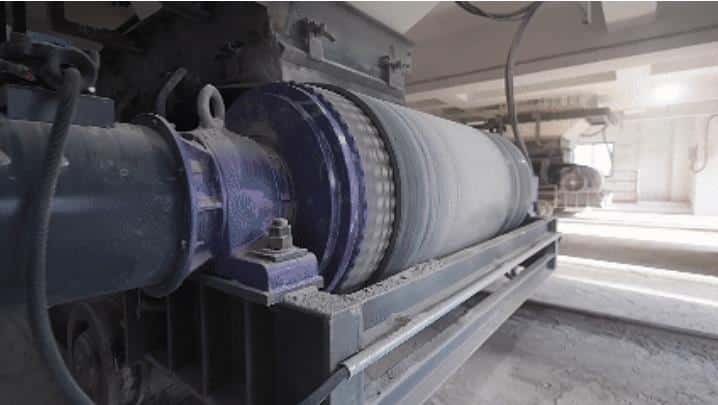Highlights
- China successfully deployed the world’s first commercial-scale 10kV high-voltage permanent magnet direct-drive electric drum motors.
- New motor technology increases conveying efficiency while reducing energy consumption by up to 22%.
- The technology cuts installation space by 70%.
- Strategic innovation positions China as a potential global leader in advanced industrial motor technology and green logistics infrastructure.
In a technical milestone with broad industrial implications, China’s Jiangsu Jiaxuan and Waston Group have jointly achieved the world’s first commercial-scale deployment of 10kV high-voltage permanent magnet direct-drive (PMDD) electric drum motors. The innovation has now run continuously for over a year in Waston Group’s 20-million-ton-per-year aggregate and manufactured sand project—signaling that this next-generation conveyor drive system is ready for global-scale replication.
Unlike conventional low-voltage asynchronous motors, these integrated PMDD drum motors dramatically increase conveying efficiency while reducing energy use by up to 22%. Their compact design cuts installation space needs by over 70%, making them attractive for modernizing aging industrial transport systems, especially in high-load, long-distance conveyor applications.

The project included 72 Jiaxuan drum motors, with 8 of them being first-of-their-kind 10kV high-voltage models deployed along Watson’s main belt systems. Engineers from both companies achieved key breakthroughs in electromagnetic compatibility, thermal management, and startup stability under high-load operating conditions—a critical hurdle in global mining, port logistics, and cement sectors.
Why This Matters for the West
This isn’t just a domestic upgrade—it’s a play for global industrial leadership. China is now the first country to mass-deploy high-voltage PMDD systems, which could become a de facto standard for smart green logistics in mining, cement, steel, and ports. The successful real-world deployment makes the technology export-ready, with applications in U.S. and EU decarbonization mandates targeting power efficiency in industrial operations.
Furthermore, permanent magnet motors depend heavily on rare earths, including neodymium and dysprosium. China’s dominance in both mining and high-end application integration gives it a reinforcing lead—not just in material supply, but in system engineering and deployment.
Questions U.S. and Allies Should Ask
- Can American or allied firms match this level of integrated rare earth-based motor innovation?
- Will this technology drive new export contracts or influence global standards-setting?
- Could Western industrial retrofits benefit from adopting similar high-efficiency systems—or will they become dependent on Chinese OEMs for implementation?
This story is not just about motors. It’s about who sets the pace in the next generation of industrial infrastructure.
Source: Original Chinese article published via China Northern Rare Earth (opens in a new tab); translated and adapted by Rare Earth Exchanges™.

Leave a Reply